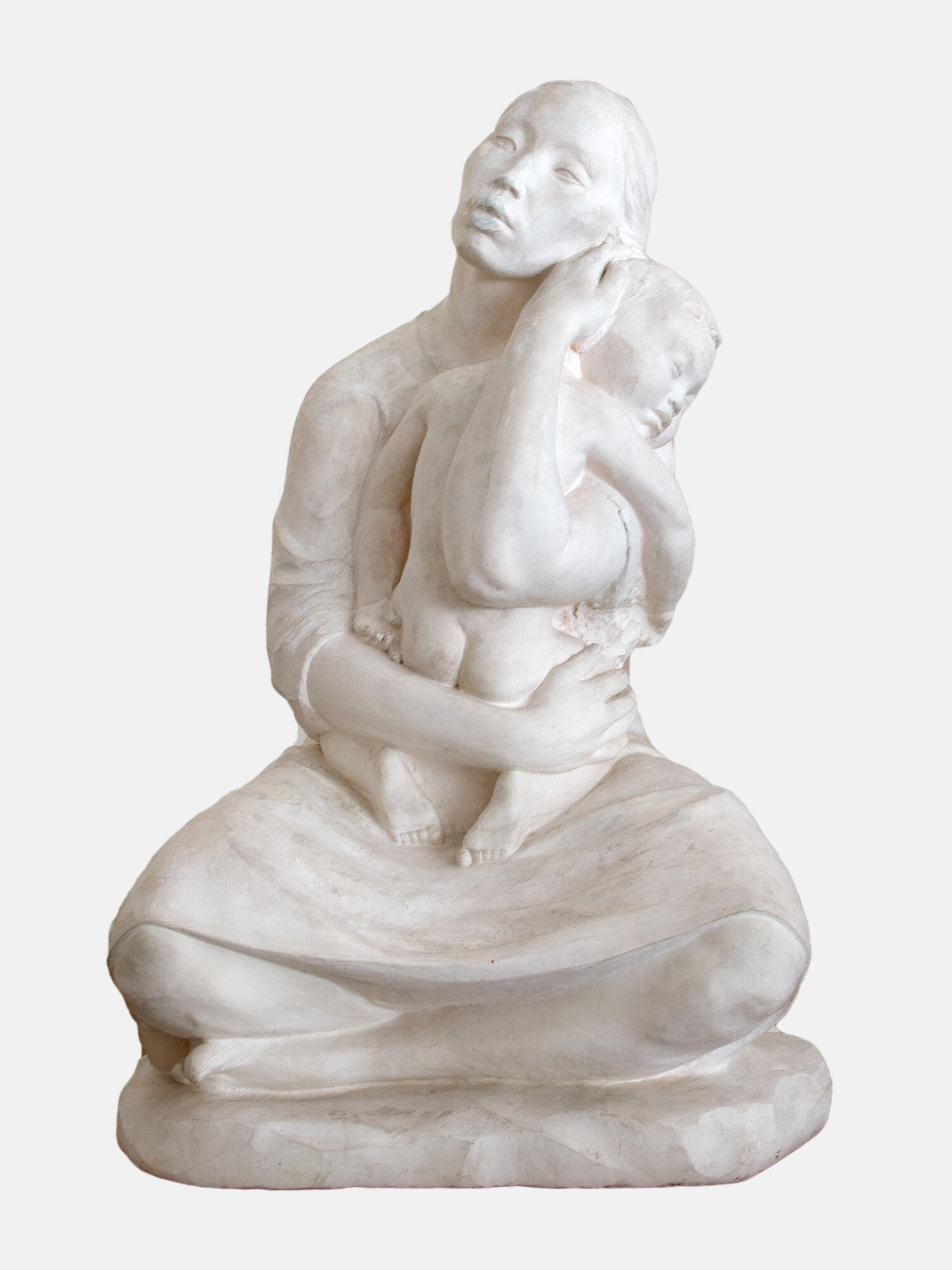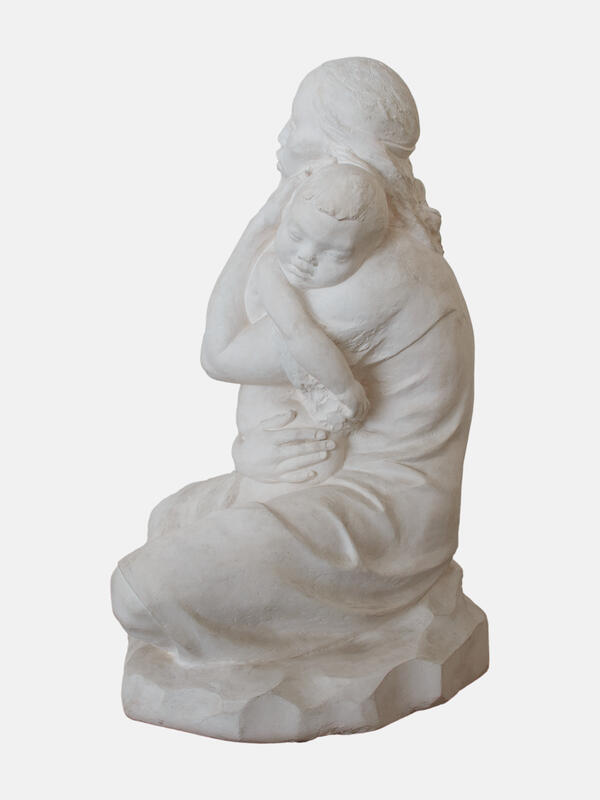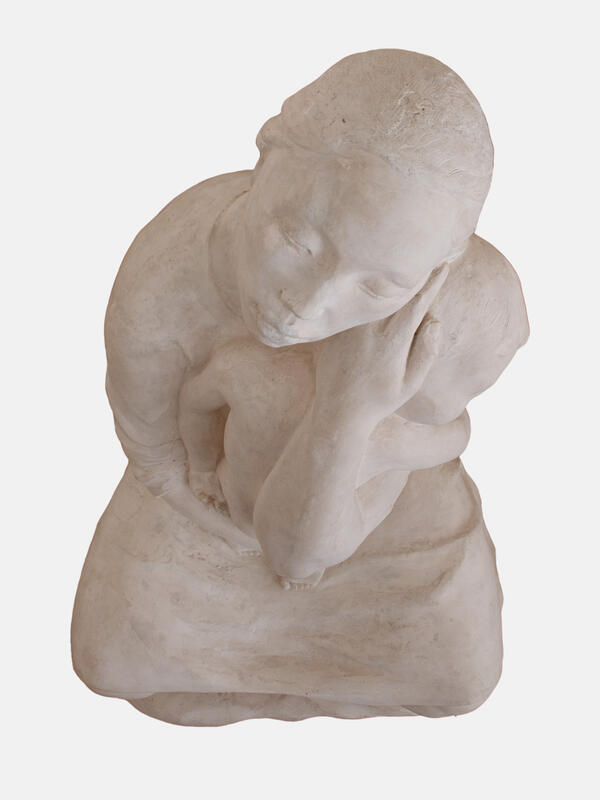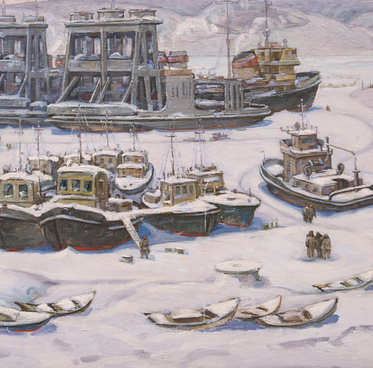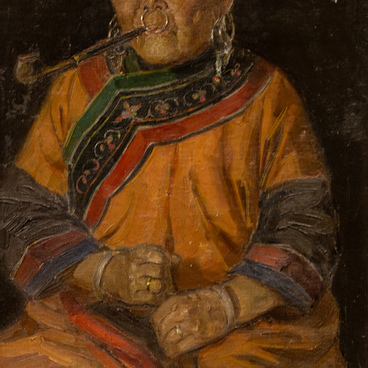Nadezhda Semyonovna Ivleva (1932–2022) was an honorary citizen and muralist, who was contemporary with the city of Komsomolsk-on-Amur. She was the only female sculptor in the Russian Far East.
In 1955, “Nadya the sculptor”, as Komsomolsk citizens fondly nicknamed her, arrived in Komsomolsk-on-Amur with a diploma of the Higher School of Art and Industry named after Vera Mukhina and devoted over sixty years of her life to rendering the unique look of this city. She created the monument dedicated to Komsomolsk heroes of the Great Patriotic War and many memorial plaques, as well as sculptures of military engineers, the revolutionary Mikhail Kalinin and the pilot Alexey Maresyev. Ivleva’s contemporaries — the doctor Vladimir Lyubimovich Pendriye, artist Georgy Alexandrovich Tsivilyov, aircraft builder Vitaly Yegorovich Kopylov and many others — were accurately portrayed by her in bronze, plaster, wood, and stone. Oftentimes, Nadezhda Ivleva worked together with her husband and sculptor Sergey Vasilyevich Nikolin.
In the late 1950s, Nadezhda Ivleva saw sketches and designs that the artist Yevgeny Vasilyevich Korolenko made in the ethnic village of Kondon and decided to follow her colleague’s example. Ivleva resided with a Nanai family for some time and was truly inspired by their lifestyle — from the way they furnished their home to the tenderness they treated each other with.
The sitter for the sculpture “Lullaby” was a young Nanai woman named Anna Digor: she did not purposefully pose for the work, but rather went on with her usual life, doing her household chores with a baby in her arms. During her trip to the ethnic village, Nadezhda Ivleva made pencil sketches and some plasticine portraits. She would later embody the images in plaster in her studio.
The schematic figure of a woman cradling an infant on her chest and the position of their intertwined arms convey the sleepiness and weariness of both the mother and the child and express the profound nature of motherhood. In 1959, “Lullaby” was displayed twice — at the regional exhibition in Khabarovsk and the first national art exhibition “Soviet Russia” in Moscow.
In 1955, “Nadya the sculptor”, as Komsomolsk citizens fondly nicknamed her, arrived in Komsomolsk-on-Amur with a diploma of the Higher School of Art and Industry named after Vera Mukhina and devoted over sixty years of her life to rendering the unique look of this city. She created the monument dedicated to Komsomolsk heroes of the Great Patriotic War and many memorial plaques, as well as sculptures of military engineers, the revolutionary Mikhail Kalinin and the pilot Alexey Maresyev. Ivleva’s contemporaries — the doctor Vladimir Lyubimovich Pendriye, artist Georgy Alexandrovich Tsivilyov, aircraft builder Vitaly Yegorovich Kopylov and many others — were accurately portrayed by her in bronze, plaster, wood, and stone. Oftentimes, Nadezhda Ivleva worked together with her husband and sculptor Sergey Vasilyevich Nikolin.
In the late 1950s, Nadezhda Ivleva saw sketches and designs that the artist Yevgeny Vasilyevich Korolenko made in the ethnic village of Kondon and decided to follow her colleague’s example. Ivleva resided with a Nanai family for some time and was truly inspired by their lifestyle — from the way they furnished their home to the tenderness they treated each other with.
The sitter for the sculpture “Lullaby” was a young Nanai woman named Anna Digor: she did not purposefully pose for the work, but rather went on with her usual life, doing her household chores with a baby in her arms. During her trip to the ethnic village, Nadezhda Ivleva made pencil sketches and some plasticine portraits. She would later embody the images in plaster in her studio.
The schematic figure of a woman cradling an infant on her chest and the position of their intertwined arms convey the sleepiness and weariness of both the mother and the child and express the profound nature of motherhood. In 1959, “Lullaby” was displayed twice — at the regional exhibition in Khabarovsk and the first national art exhibition “Soviet Russia” in Moscow.
